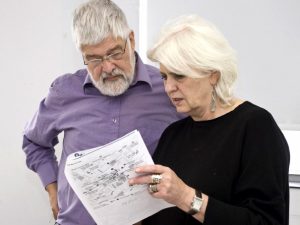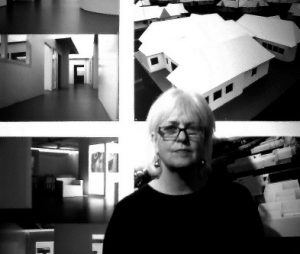Professor Hilary Dalke (Emeritus), Kingston University London
Healthcare
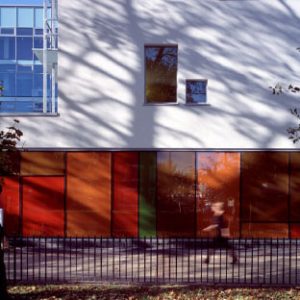
Kaleidoscope Children and Young People’s Centre
Photos Copyright Tim Crocker Courtesy: Architect – Van Heyningen Haward

- Colour design projects here are all in healthcare sectors – see also Lighting & Colour for Hospital Design (internal link to CROMOCON SHOP)
- A large London hospital ward was renovated as a specialist Dementia Care Assessment Ward
- A new wing of a South London Care Home was redesigned with the CROMOCON team
- The dining room completed with accessible seating for people with dementia and low vision
- As specialists in colour design, CROMOCON delivered many sensory design solutions for hospitals and A & E Departments and mental healthcare environment refurbishments in the UK
Housing
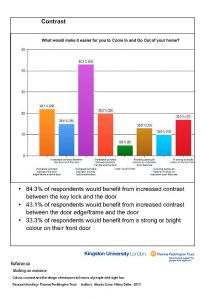
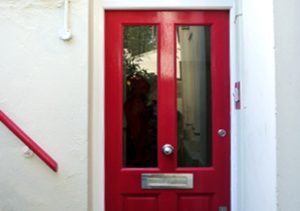

- Effects of colour and lighting on people who occupy small spaces has been a constant focus for us
- Work completed with 91 VIPs for Thomas Pocklington Trust (external link to TPT) highlighted the issues that visually impaired people (VIP) face daily with housing and independent living
- 87% of those surveyed had problems just finding their own front door keyhole!
- A renovation by CROMOCON and AATi of a visually impaired person’s flat entrance was a model for all future refurbishments
Prisons
- Raising the standard of design from the usual ‘basic’ solutions, effective in suicide and self-harm environments
- Including small better design details, resulted in less damage of areas such as showers in male and female units
- Designs of 14 environments were completed for those who are confined, long-term and less mobile
- Every element of the structure was considered for its purpose and visual impact on the occupant of that space
- Staff in a variety of environments reported an increased respect of the spaces generally by inmates who were suffering with suicide and self harm tendencies
Special Needs

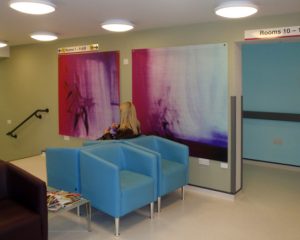
- People in care may only occupy a maximum of three spaces
- These are a bedroom, corridor and day room that may be visited with a carer
- Immobility, disability and lack of freedom of movement all need simple construction and carefully designed solutions to be stimulating to accommodate all kinds of deprivation
- Design for special needs environments, required skill for extreme sensory design
- Completed projects in sexual health clinics, environments for the older person, mental healthcare, people with dementia, and schools for children with autism
Access Design
- Designs were completed for colour coding and public information systems
- Educational buildings and complex sites required intelligent design to make accessible
- This included text based and visual cue solutions where colour coding can cause confusion
- 8% of males have colour blindness issues, people with cognitive impairment may have trouble with colour coding words, and the multiplicity of languages spoken today in London (256 in one London hospital) for example make these things difficult for all users of environments
Entertainment Sites
- This corridor had a large busy boring situation in a nursery/playgroup site
- Spaces that create a sense of well-being for play in the leisure industry were completed for an organisation in South London
- A new design was proposed as a ‘Walk Through a Park’ that provided an oasis for children, parents and staff with a ‘story’ and adventure
Public Venues
- Safe and accessible spaces for the public areas in multimodal transport points were investigated and design proposals published
- Colour design initiatives are needed for accessible public spaces and key colour contrast for accessible seating
- Provision for environments that are accessible for people with low vision or cognitive impairment is central to this work
- Transport areas required quality non-slip flooring
Transport
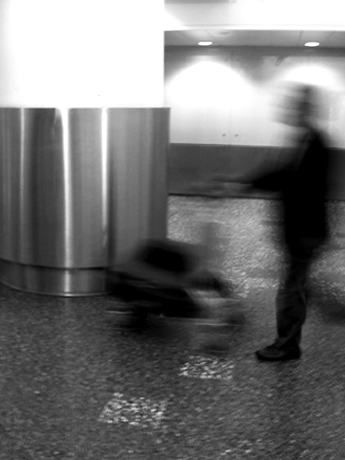
- Signage, wayfinding, lighting and environmental design for transport sites has been part of our work
- Consultancies have included Bus Station Colour Design Guidance for Transport for London, Visual Impairment and Multimodal Transport Environments for the Department of Transport,
- A Docklands Light Railway Design Guide had a major contribution from us on design for visual accessibility
- All materials, paving slabs were graded by their LRV %
- The use of adequate CONTRAST in these public spaces for visually impaired travelers is imperative for safety and traffic flow
- Much of our work creates palettes of materials that are tested and cleared for visual perception using the CROMOCON SYSTEM
Retail & Leisure
- Understanding user sensory needs and safety in the retail and leisure environment has been our focus since 1998
- Sensory design plays a substantial role in the physical and psychological aspects of personal well-being in retail areas
- Demographic changes in the consumer population with the 50+ market, rapidly brought shops to realise the importance of creating retail spaces suitable for the ageing population
- The impact of colour design and lighting, well designed signage and communication, is paramount for retail
- Purchasing behaviour in retail sectors, is a major area for CROMOCON tools to ensure accessibility
- Comfort and confidence in retail for many of our clients’ and their customers are priorities
